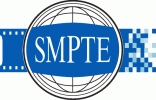|
|
|

|
|
Encoding, Restauration, Standard ConversionEncodingMultimedia today offers a wide range of formats and standards. And this makes it very important to comply to these standards. One encoder or another encoder, this can make a huge difference and the nightmare begins when you recognize that the quality of the final product is behind expectation or the result is not compatible to the end customers devices. Using an MPEG2-Encoder which is based on the mathematics of the encoding specialist Rhozet, I can assure compatible and standard-compliant results and besides reduce the bitrate and so the file size to a very low level, without affecting the quality with annoying compression artifacts. Audio also has much potential to do things wrong. MPEG1 Layer 2 audio, allowed on PAL-DVDs, but not the best solution, or the wrong byte order in the Dolby Digital audio stream, and the one or other home cinema system won't output any more audio. This is why I always use AC3 audio which is encoded by the Dolby Pro Encoder, which is a product of Dolby themselves. Only like this it is possible to ensure maximum compatibility and highest quality. Also feel free to ask for other formats like I-Frame Only MPEG2 with 4:2:2 profile for digital playout archives or H.264. Restoration and filteringNoise is not only annoing, it is also "movement" in the picture. Movement, the MPEG2 or H.264 encoders have to deal with. As these codecs suffer from quality loss or need higher bitrates in high movement scenes, it is important to keep the "movement" from the noise as low as possible. If the noise is removed correctly, you even may find sharpness or details which you assumed to be list in this video. Good filtering, which includes noise reduction, edge enhancing and much more, can have many ambitions: Either restoration without compromises to achieve a top-notch quality, or the removal of artifacts like noise from analogue video, but without destroying the "patina" which gives a certain charm to a movie classic. You decide, depending on your needs and wishes, which aim the filtering should achieve. Noise reduction is possible in realtime during the ingest, as well as "offline" for materials stored to the hard drive. Both methods are quite different, but they have one thing in common: The wide range of existing filters, which often have many options, offer a high potential to achieve a high quality, or to do anything wrong and even destroy the last remaining quality. A very good example are the realtime filters from DV-converters for home users versus the sophisticated SDI Pre-Processor devices from the professional range. While the consumer products offer only few settings and efficient noise reduction leads to visible loss of sharpness or motion blur, the professional devices achieve an good result without parasitic artifacts. Even more efficient is the offline filtering with noisefloor analysis. But this can take much time, depending on the efforts to be made up to 10 times as long as the material runtime, but with astonishing results. Both, online and offline filtering, make it necessary to configure the filters very carefully. So they reduce much of the unwanted noise, they also can reduce much of the wanted details in the same step, if you don't know what you do. And so a wrongly configured filter can achieve, what no beauty doc is able to do: Tender, wrinkle-free skin for all people in the age from 8 to 80. You can rest assured that I not only use the most sophisticated filtering technology, but also configure it carefully and with the best parameters possible. Standard conversion and upscalingPAL, NTSC or even SECAM? Not only the content makes the difference, but also the standard it is transmitted in. Luckily, in the digital world, the difference between PAL and SECAM is history, as both have the same resolution and timing, while the colour modulation does not matter anymore in SDI-signals or files on a DVD or harddrive. But NTSC is quite different from that. Many NTSC sources are originally film and have been converted from 23.976 to the NTSC 29.97 frames per second by 3:2-pulldown. Such sources can be easily converted to PAL without any loss of quality. But not by hardware and only with knowledge about the problems which can result from errors in the pulldown sequence, which can result e.g. from editing after pulldown. And also if this trick is not possible, e.g. for native NTSC camcorder material, the right software and experience can make a huge difference. Also for HD-upscaling, the right settings of the scaler and filters are crucial and decide whether you achieve near-HD quality or if you can stay at SD. Also when downscaling from HD to the still very common SD resolution, you won't lose too much details if it is done right, or you will lose more details than wanted if done wrong. Send me your inquiry and you will receive a customised offer. Short test sequences with your own source materials are also possible. All offered options are possible for materials which are delivered for ingest. Materials which are already digital and delivered on harddrive or DVD, realtime hardware filtering it not possible, but equivalents with same price and performance exist. Filtered materials will be delivered on hard drive (has to be provided by customer), CD, DVD or BluRay (data, authoring optional).
Volker Schauff Media Services -
VS-Mediendienste - Small business according to German law §19 (1) UStG - The
Imprint

 SMPTE - Society of Motion Picture and Television Engineers - Associate Member FKTG - Fernseh- und Kinotechnische Gesellschaft e.V. - Individual Member 
|
|